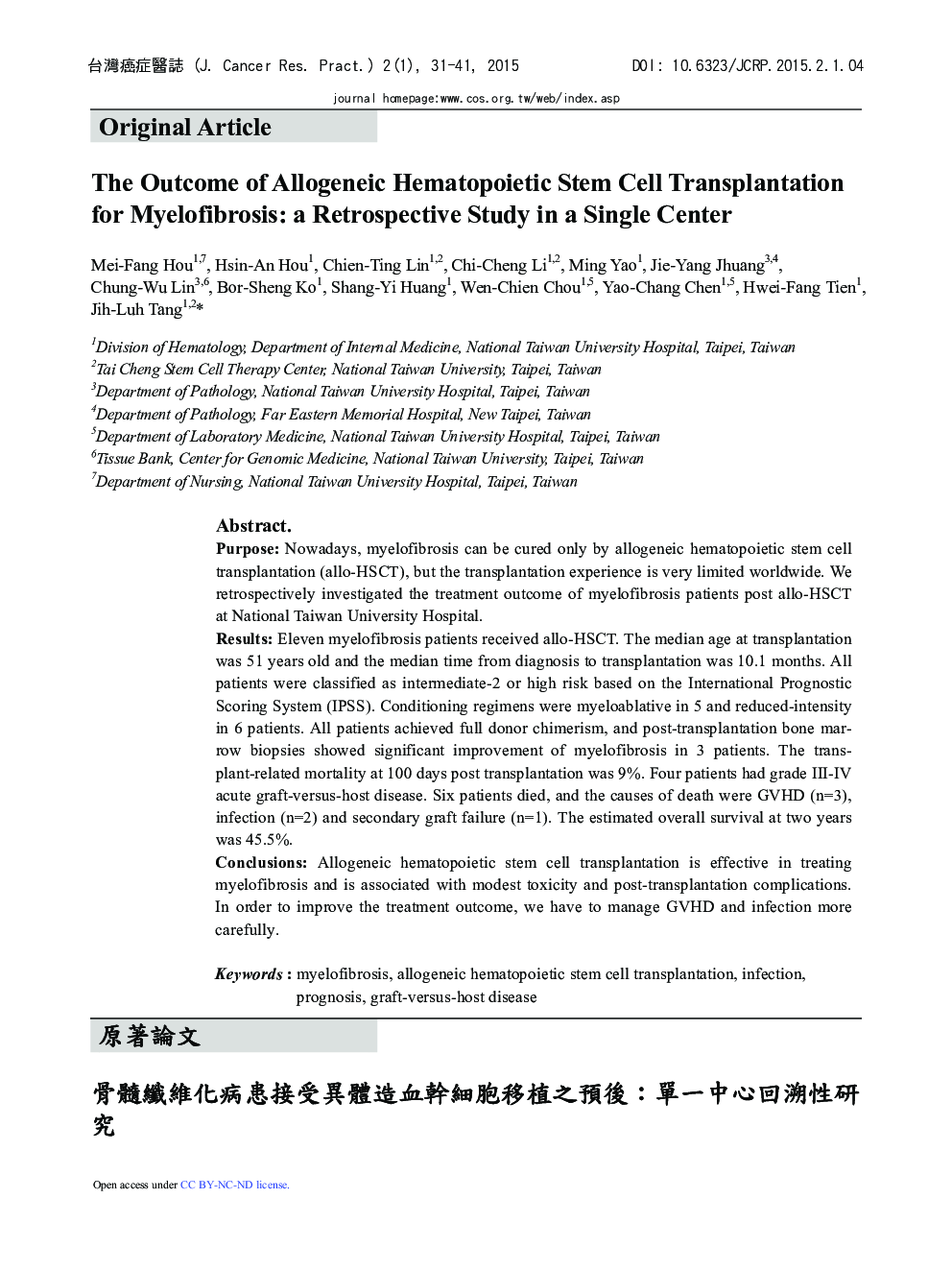| Article ID | Journal | Published Year | Pages | File Type |
|---|---|---|---|---|
| 3988797 | Journal of Cancer Research and Practice | 2015 | 11 Pages |
PurposeNowadays, myelofibrosis can be cured only by allogeneic hematopoietic stem cell transplantation (allo-HSCT), but the transplantation experience is very limited worldwide. We retrospectively investigated the treatment outcome of myelofibrosis patients post allo-HSCT at National Taiwan University Hospital.ResultsEleven myelofibrosis patients received allo-HSCT. The median age at transplantation was 51 years old and the median time from diagnosis to transplantation was 10.1 months. All patients were classified as intermediate-2 or high risk based on the International Prognostic Scoring System (IPSS). Conditioning regimens were myeloablative in 5 and reduced-intensity in 6 patients. All patients achieved full donor chimerism, and post-transplantation bone marrow biopsies showed significant improvement of myelofibrosis in 3 patients. The transplant-related mortality at 100 days post transplantation was 9%. Four patients had grade III-IV acute graft-versus-host disease. Six patients died, and the causes of death were GVHD (n=3), infection (n=2) and secondary graft failure (n=1). The estimated overall survival at two years was 45.5%.ConclusionsAllogeneic hematopoietic stem cell transplantation is effective in treating myelofibrosis and is associated with modest toxicity and post-transplantation complications. In order to improve the treatment outcome, we have to manage GVHD and infection more carefully.
